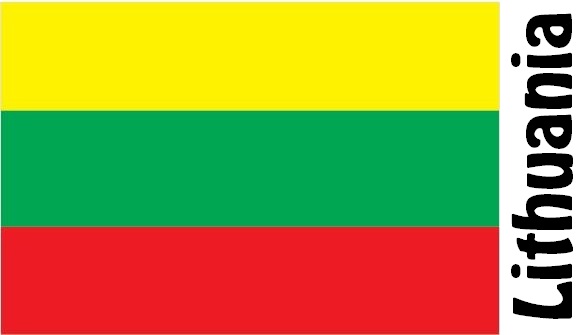Lithuania Facts
Lithuania, Baltic Sea State; 65,300 km², 2.8 million residents (2019).Lithuania borders in the north to Latvia, in the east and south-east to Belarus, in the south to Poland and in the southwest to the Russian exclave Kaliningrad and has a west coast to the Baltic Sea. The capital is Vilnius.

Country facts
- Lietuvos Respublika / Republic of Lithuania
- Country abbreviation: LT
- Area: 65 300 km²
- Population (2019): 2.8 million residents
- Capital: Vilnius
- Main language: Lithuanian
- State: Republic
- Head of State: Gitanas Nauseda (President)
- Head of Government: Saulius Skvernelis
- Per capita GDP (2018): US $ 19,089
- GNI per capita (2018): US $ 17,350
- Currency unit: 1 euro = 100 cents
- Currency code: EUR
- Country code (telephony): 370
- Internet Domain Name: lt
- Time difference compared to Sweden: +1
- National Day: February 16 (Proclamation of the Republic, 1918)
Nature
- Land use: forest (34%), agricultural land (43%), other (23%)
- Highest mountain: Juozapinė (292 m asl)
- Longest river: Nemunas (937 km)
Population
- Population density (2019): 43 residents per km²
- Natural population growth (2019): −0.4%; birth rate 10 ‰, death rate 14 ‰
- Age structure (2019): 0-14 years (15%), 15-64 (65%), 65- (20%)
- Average life expectancy (2019): men 71 years, women 80 years
- Infant mortality (2019): 3 per 1,000 live births
- Population forecast 2050: 2 million residents
- HDI (2017): 0.858 (place 35 of 189)
- Urbanization rate (2019): 67%
- Most populous cities (2018): Vilnius (536,700 residents), Kaunas (288,500), Klaipėda (149,000)
Business
- Industry’s contribution to GDP (2017): agriculture (4%), industry (29%), service (66%)
- Exports (2017): US $ 29,120 million
- Main export products: oil products, machinery, chemicals
- Main exporting countries: Russian Federation, Latvia, Poland
- Imports (2017): US $ 31,560 million
- Main import products: oil products, machinery, means of transport
- Main importing countries: Russian Federation, Germany, Poland
- Railway network (2014): 1,770 km
Lithuania mainly consists of a low lying, smooth plain, especially rich in sinks and lakes. Among the rivers, Nemunas with tributaries is the largest. The coast is low and lined with cushions. In climatic terms, the country is a transitional area between a milder, maritime-stressed climate in the west and a more continental and cold-tempered east.
The country is governed by a president elected for five years and a parliament elected in general elections for four years. Lithuania became independent in 1991.
The privatization of businesses, housing and agricultural land was started early, but much reform work still remains, mainly in agriculture. The economy is strongest in the capital and the larger cities, while the countryside is declining at an ever faster rate. Oil refining has traditionally been the basis of the country’s industry, but in recent times lighter manufacturing and service production have increased in importance. Initially, the country coped with the international financial crisis better than its neighboring countries, but in 2009 GDP fell dramatically and unemployment rose. During the 2010s, the economy has gradually recovered and unemployment has slowly declined.
Lithuania Map














































